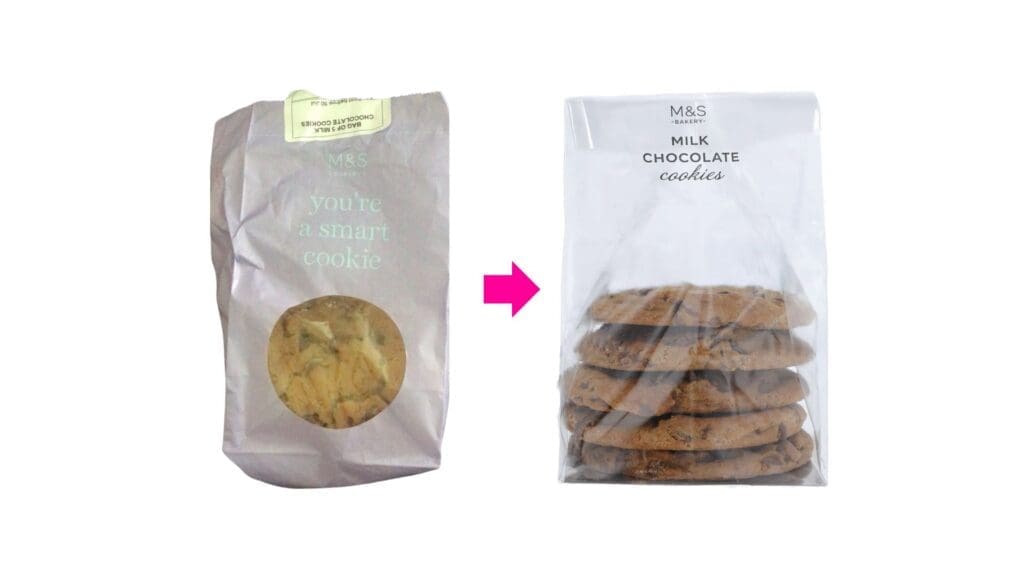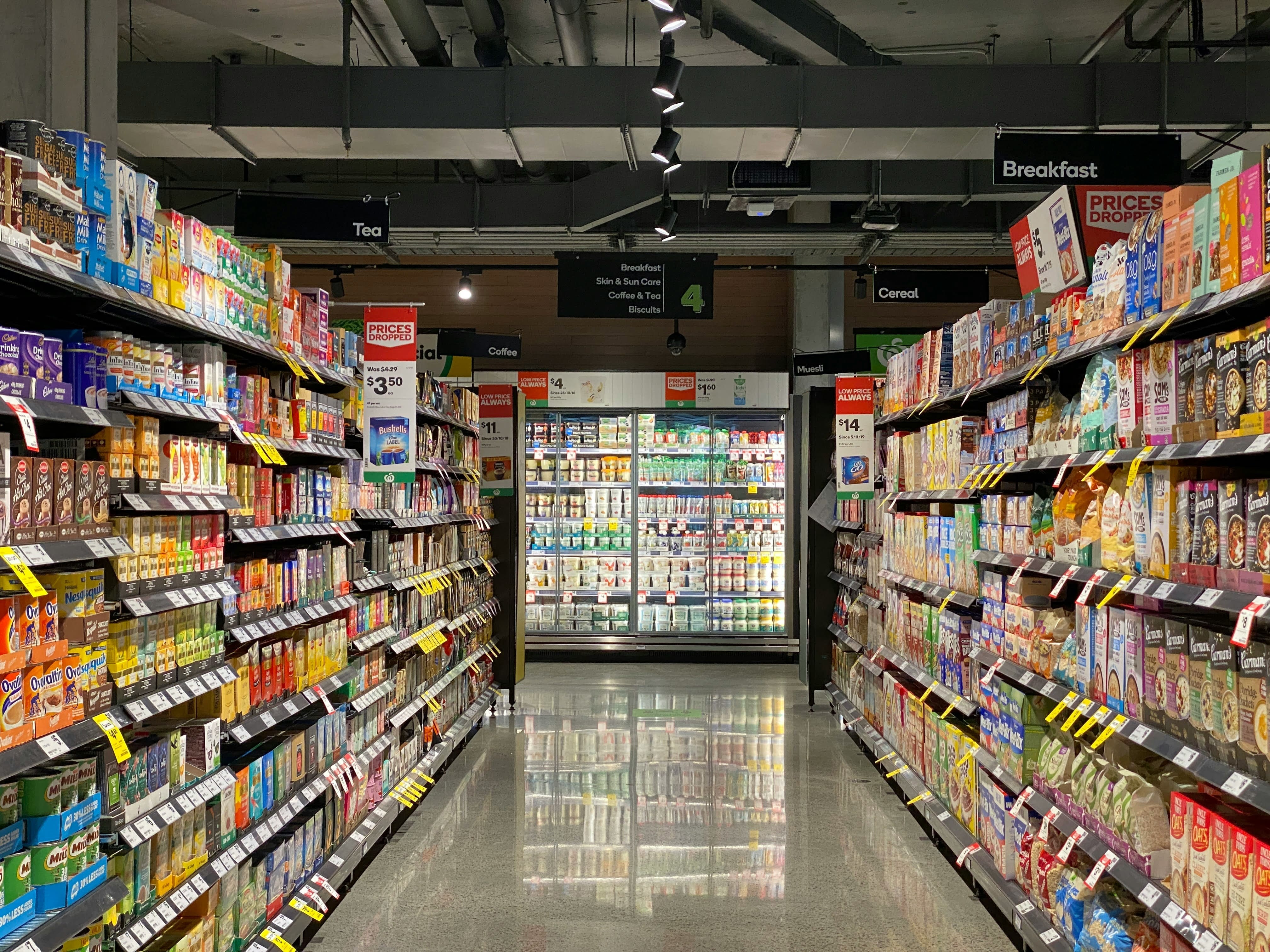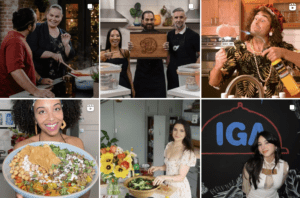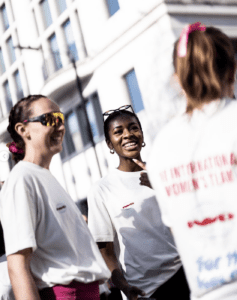Supermarkets are no longer just stocking shelves – they’re curating content.
The TikTok Effect
‘Taste testing the new VIRAL M&S cookies’ may have been something you saw all over your FYP a few months ago – one of which you might have seen was from us here at The Fifth:
Marks and Spencer changed their cookie recipe and swapped their paper packaging to make it look more aesthetic and luxurious, after all deciding which product to buy on the crowded supermarket shelves is all a matter of design. And TikTok did the rest. Taste tests and grocery hauls led to the cookies selling out and becoming the newest food trend.

Afterall, Marks and Spencer have become more a lifestyle brand than just your average supermarket – as we all know from their slogan ‘this isn’t just any food, this is M&S food’. It wasn’t the first – or the last – time M&S went viral for a new product. More recently they hopped on the newest food social trend of pistachio after the ‘Dubai Pistachio chocolate’ went viral late last year (Can’t Get Knafeh of It’ from Dubai-based Fix Dessert Chocolatier. The bar features crispy kataifi, pistachio and tahini paste, all wrapped up in milk chocolate. Individual bars cost 68.25 UAD; around $18.50). M&S released a pistachio cream *just* in time for pancake day. The timing of this launch meant that TikTok spotted the product and named it as a must-try (note this play in gaining traction with the algorithm).
These aren’t Marks and Spencers’ only social success, though – you might have seen products such as bueno iced lattes, Caesar dip, and its £6.50 ‘Big Daddy’ chocolate bar.
Last year, creator Logan @logagm’s cucumber salad went so viral that supermarkets in Iceland ran out of cucumbers as producers were unable to keep up with the high demand, making them one of the most commonly ordered items across the entirety of London.
The brand ambassadors
Another marketing strategy M&S are known for is their ambassadorship programme, using content Creators such as Zoe Sugg, Rochelle Humes, Emily English and many others, including chefs, to shout about M&S new launches across their platform. This includes their seasonal launches such as easter hot cross bun selection, and their valentines collection, as well as sharing their own recipes, using exclusively M&S food.
Employees are the new influencers – But should they be compensated?
Another supermarket utilising social media is Waitrose, but this time for a slightly different reason. Waitrose has its main TikTok account, but then there are separate accounts for their individual stores run by their employees. Their Maidenhead store is the largest with 34 thousand followers (Only 10 thousand behind the main store account). This account is full of EGC (employee-generated content).
The Maidenhead Waitrose store TikTok is filled with the employees doing trends and showcasing new and trending products; the followers lap this up, with their biggest video hitting 7.2 million views and over a million likes.
It’s not just supermarkets winning with this strategy; all the best brands on social media know that their strongest influencers might already be on the payroll. Companies such as SheerLuxe, Currys, and even The Jennifer Hudson Show are seeing huge success by putting their employees front and centre on social. This strategy works because audiences build parasocial relationships with these familiar faces, almost like a TV show with recurring characters.
Rather than relying solely on external Creators, brands are realising the value of their own team members. As the TikTok creator in this discussion puts it: ‘Employees have an edge over traditional influencers: they work with the product daily, making them true insiders. Unlike a one-off sponsored post, their connection to the brand is long-term, giving their recommendations more authenticity.’
Currys, for example, has seen major financial success from these employee-led videos. But that raises an important question, if a staff member is driving sales the way an influencer would, should they be compensated accordingly? After all employees stepping in front of the camera aren’t just doing their day job; they’re becoming the face of a brand. That comes with added responsibilities and even potential privacy concerns. It’s a new debate, but one worth having as brands increasingly blur the lines between staff and content Creators.
As supermarkets continue to leverage social media to drive trends, we’re seeing a shift in how brands engage with their audiences, relying on both influencers and employees to make a brand feel more authentic and accessible. Brands like M&S and Waitrose are not just selling products; they’re selling an experience, one that consumers are eager to share.
Key Takeaways:
Authenticity drives sales: Whether through influencers or employees, content that feels genuine and relatable resonates with audiences. Brands are tapping into this by showcasing everyday people who genuinely love their products.
Packaging is more than just packaging: The shift in M&S’s cookie packaging is a perfect example of how aesthetics and design play a crucial role in making a product shareable and creating a buzz.
TikTok is a game changer for food trends: What was once limited to celebrity chefs and TV ads is now in the hands of millions of users, turning food products into social media stars. TikTok is not just a platform for discovery; it’s becoming a place where brands and consumers interact in real-time.
Employees as Brand Ambassadors: Companies are realising the value of their own employees as influencers. The personal connection consumers feel with staff members adds authenticity, which can result in higher engagement and sales.
The future of supermarket marketing looks brighter than ever, with social media trends shaping not just what we buy, but how we buy it.
Ultimately, it feels like we’re always just one viral moment away from discovering the next food trend on the shelves.
See here for more insights into the food and drink industry.
Written by Laina Claydon






